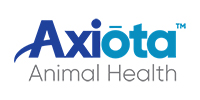The information below has been supplied by dairy marketers and other industry organizations. It has not been edited, verified or endorsed by Hoard’s Dairyman.

Calf Utilization and Health
While a calf is born with extremely high levels of trace minerals, those elevated levels do not last for long. Similar to the decrease in maternal antibodies over time, trace minerals are utilized quickly in the growing calf. Without supplementation, a calf will decrease its trace mineral levels by 75% in the first 8 weeks of life. In dairy calves, 8 weeks of age is generally around the time of weaning, meaning that calves may be nearing or at deficiency when the calf is going to experience a stressful event. This is a period in which calves will also be introduced to more calves as they are moved into group housing, increasing their exposure to pathogens. In addition to weaning, there are often vaccines given near or at the same time as weaning which also causes an increase in the utilization of trace minerals from the calf’s reserves. All of this increases the risk of a post-weaning slump and vaccination failure.
Trace Minerals and Vaccines
The immune system requires energy, protein, and trace minerals to protect the body. White blood cells which circulate through the bloodstream require selenium to exit circulation and move to the site of infection whether it is the intestines, the lungs, or the udder. Once at the site of infection, the white blood cells will consume the pathogen in a copper-dependent process known as phagocytosis. Once consumed, the white blood cell will release an oxidative burst – similar to hydrogen peroxide - to kill the pathogen. After the burst, the cell must utilize trace minerals in antioxidants to neutralize the oxidative burst before the white blood cell is damaged. A similar process occurs when a vaccine is given. Trace minerals assist the white blood cells which find the vaccine and carry it back to the lymph nodes where the antibodies are produced, which requires further utilization of trace minerals. The rapid absorption rate of injectable trace minerals allows the body to have the required trace minerals to improve the response rate of calves to vaccines. A university study showed that calves that received an injectable trace mineral at the same time as a vaccine improved the vaccine response from 53% to 80% where a response was defined as a four-fold increase in antibody titers. A follow-up study showed that calves receiving injectable trace minerals also had a significantly reduced severity of clinical signs as observed with an endoscope through the respiratory tract of the study calves.
The health and development of calves contains many pieces to the puzzle to be successful. One often-overlooked piece is ensuring proper trace minerals status of the dam before birth as well as proper and timely supplementation during critical points of development to help calves to thrive.
Click here to learn more about improving immune response at vaccination.
Find my local Multimin rep





